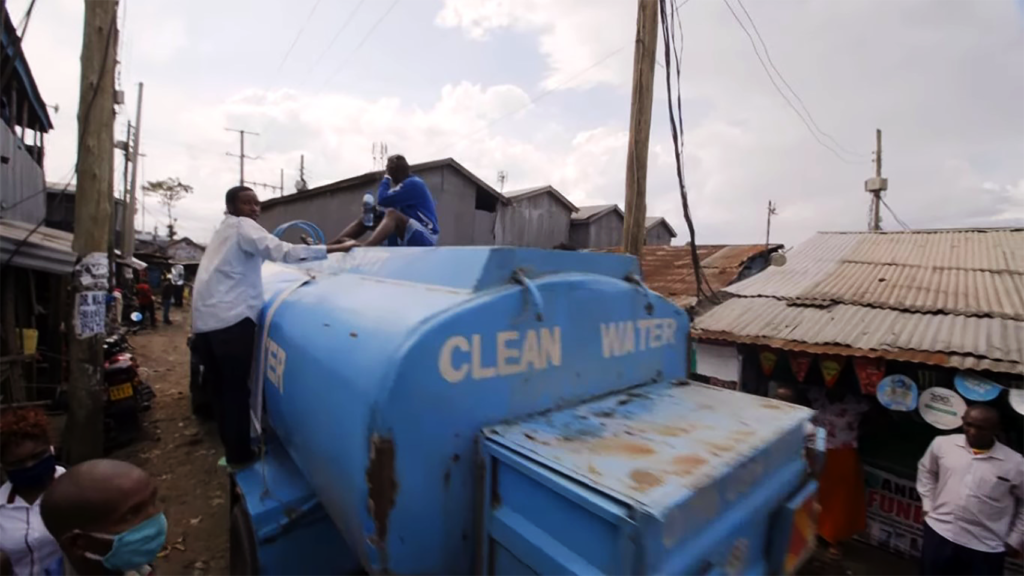Visualizing
the Virus
Communicating COVID-19
Expanded Media Narratives
As of June 20, 2021, Kenya had recorded more than 179,000 cases of COVID-19. The government had announced the country’s first known case on 13 March, 2020.
About a year ago, I came across a short video made by Boniface Mwangi, a well-known community activist. The video was titled Sauti ya Mtaa (Kiswahili for ‘Voice of the Street’). It focused on the residents of Mathare, a densely populated, low-income residential area in Nairobi. The residents shared their lived experience of the Coronavirus with Mwangi, who also served as the narrator.
Their stories stood in stark contrast to government updates, policies and recommendations.
Government recommendations included a call to citizens to wear face masks, wash hands with sanitizers/soap and water, and work virtually/from home.

Screengrab from “Sauti ya Mtaa” by the Activist Boniface Mwangi, who has used social media to tell COVID-19 stories in Kenya (2020)
But the Mathare residents said they lived in very close proximity to each other, and bought water, which they received twice a week. Some had lost work or did not have jobs that could be done virtually.
Mwangi’s video demonstrates that in issuing the COVID-19 guidelines, the government had not adequately taken on board the circumstances of their citizens, in particular, the urban poor.
As a Media Studies researcher, I was struck by several questions raised by the video, including: whose story was being told? by whom? and how was the story being told?
I subsequently wrote the following piece for The Conversation Africa, which recognizes the emergence of new media voices telling Kenya’s COVID-19 stories. These voices consist of individuals and organizations using platforms such as Facebook Live, Instagram TV, Twitter and own-domain-websites. Their content enables non-elites to be as important within a narrative as the typically more dominant elite sources.
The article suggests that the production and distribution of news has filtered beyond the traditional newsroom, with the new content creators questioning official narratives, upsetting journalistic norms, shaping alternative journalism approaches, and moving beyond advertising as the primary source of journalism revenue.
Find here, more about the article of Prof. Wamunyu and the short video made by Boniface Mwangi.

